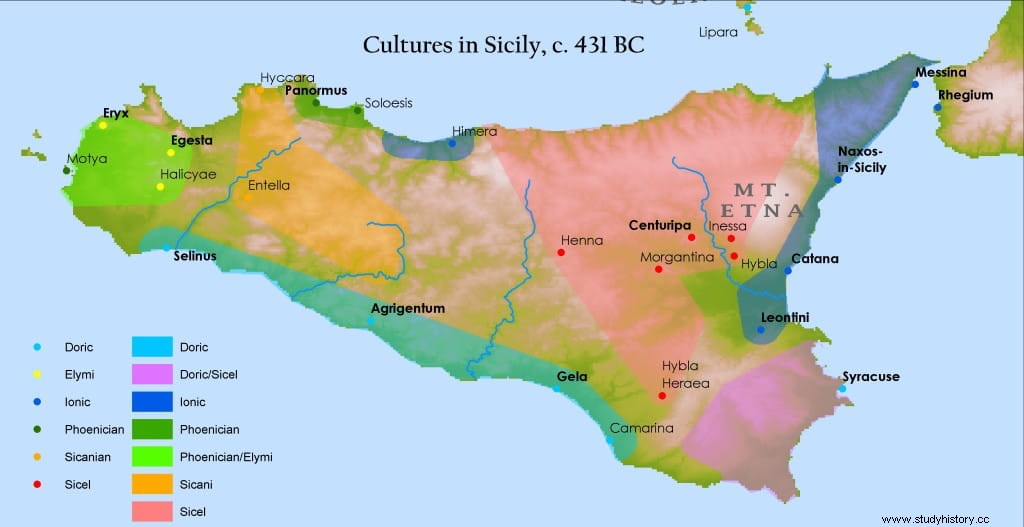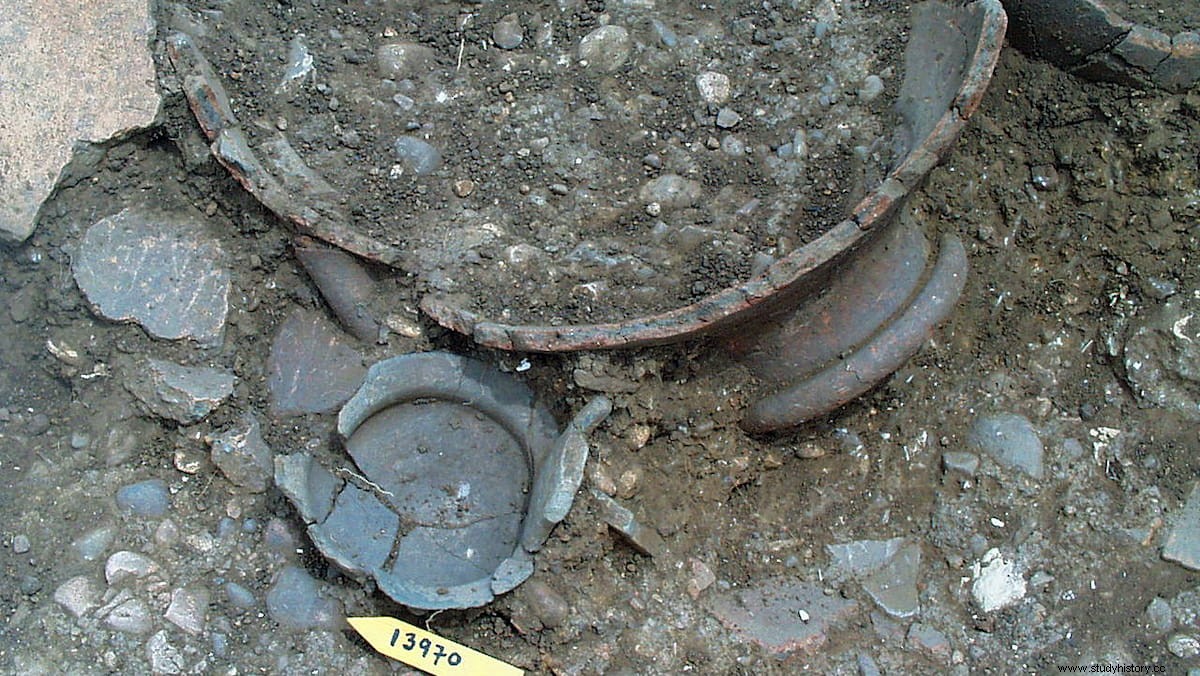In general, the historiography concerning ancient Sicily is overwhelmingly Grecocentric, that is, focused on its Greek immigrants. Given that the architectural remains of the indigenous population are relatively invisible, while those of the Greek immigrants are monumental, the accepted historiography has been that the indigenous population had neither territory, nor power, nor economic resources.
Instead, it has been accepted that as soon as the Greeks settled on the island (on the western side in 628 BC) they colonized and controlled most of the Sicilian lowlands, the economy, and thus also the population. indigenous.
This perspective has contributed to an imbalance and a distorted image of the role of the indigenous population - the people that the Greek historian Thucydides called the élimos – in the natural, cultural and economic landscape of western Sicily during the archaic period (700-500 BC), according to Cecilia Sandström, a doctoral student in classical archeology and ancient history at the University of Gothenburg.

My goal with the thesis was to change the focus. The indigenous population should not be seen as a homogeneous group, but rather as independent actors with their own agendas, tastes and preferences .
The place of their study is the Elymian settlement of Monte Polizzo, located in western Sicily and strategically located on a mountain, about 700 meters above sea level and about 20 kilometers from the western coast, halfway between the settlement Phoenician of Motya, the Greek of Selinunte and the largest Elym settlement of Segesta.
Monte Polizzo was only inhabited for 75 years, between 625 and 550 BC. The settlement, of approximately 20 hectares, was abandoned after a great fire that destroyed all the buildings, except the religious temple of the acropolis .
Cecilia Sandström has used interdisciplinary methods in her study. In addition to the archaeological material, which clearly shows the commercial contacts with the different peoples of the Mediterranean, she used palynological, macrobotanical and geomorphological analyzes of the surrounding landscape, and traced the conditions of trade in the place. Another important factor was her research on whether the rivers were navigable and could be used as transportation routes.
The large number of imported carrying amphorae (the two-handled vessels that were common in ancient times) deviates from the rather modest amphorae material found in other indigenous settlements in the area.
A common idea in the research tradition is that the contents of these imported amphorae were only for the elite, who often received them as gifts from the Greeks and Phoenicians, but there is no evidence of this gift system at Monte Polizzo. The findings instead show that trade was an important part of the settlement's economy .

A very unusual factor compared to the Greek, Phoenician and other Elym settlements in western Sicily is the fact that a large number of (mostly Etruscan) amphorae are scattered throughout the settlement, not just in the temples and rich houses .
The variation in the provenance of the amphorae also shows that its inhabitants had access to different networks that could be reached indirectly through Greek and Phoenician settlements. But the study also shows that there were many opportunities for direct contacts through river estuaries .
Studies on the ecological and economic conditions of the investigated area reveal unique findings.
The fact that the local economy on Monte Polizzo comprised animal husbandry and agricultural products, possibly exported along with timber, is not in itself surprising. However, analyzes of river sediments show that they in fact totally deforested their surroundings and farmed the land so intensively that the fertile, humus-rich soil was completely eroded in less than 75 years .
In addition, geomorphological studies show that much of the area between the western coast and the interior, where Monte Polizzo was located, began to turn into swamps.
But it cannot yet be proven whether diseases such as malaria, documented in Sicily during the 5th century BC, were already present in the 6th century BC. Combined with deforestation and the less fertile soil left behind by the elimos, this was perhaps reason enough to abandon the site, and meant that it was never inhabited again.
